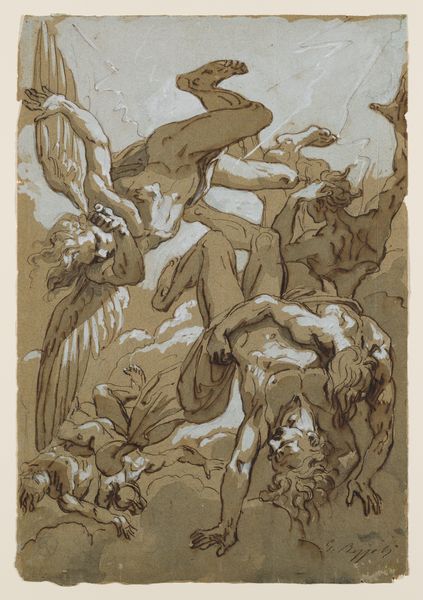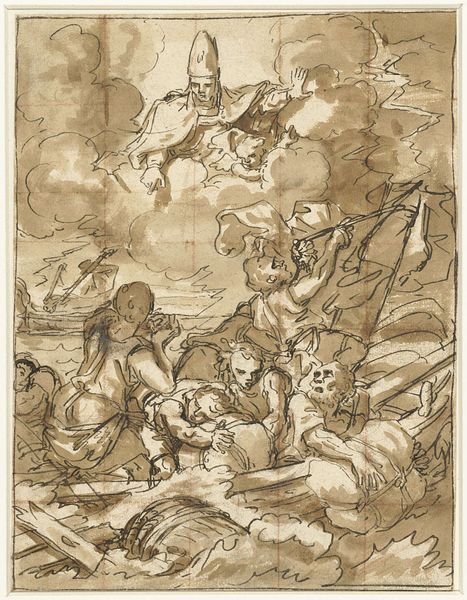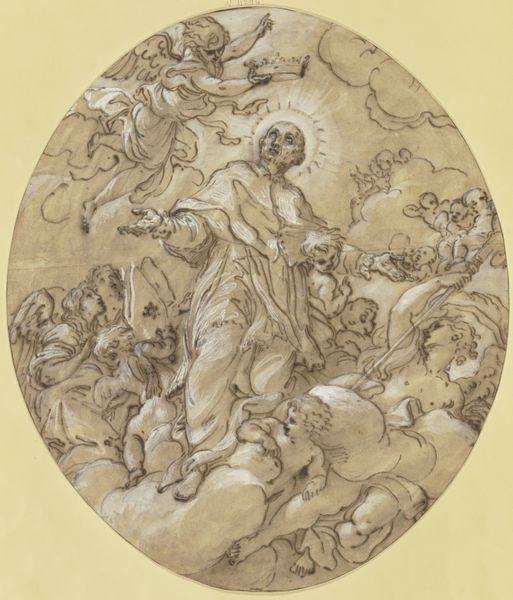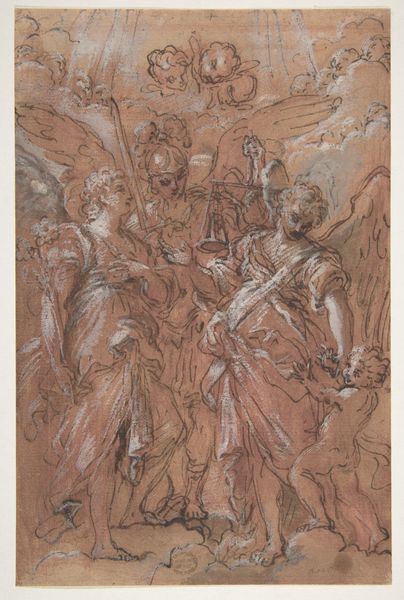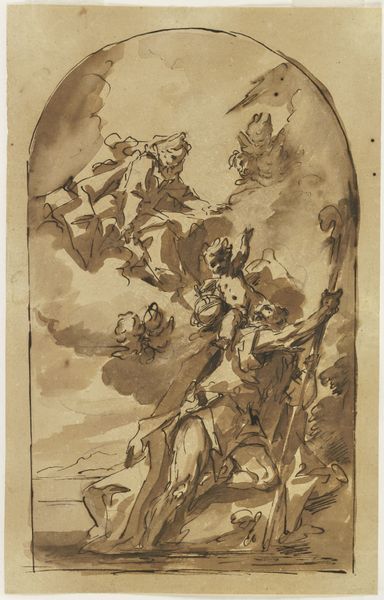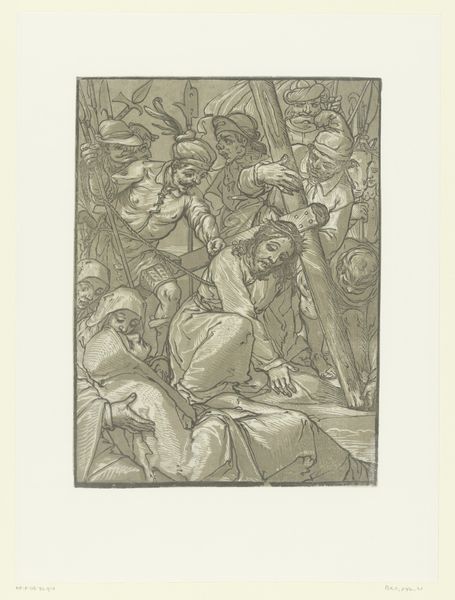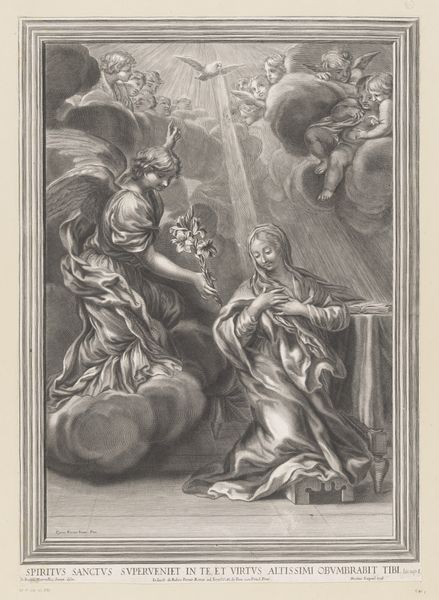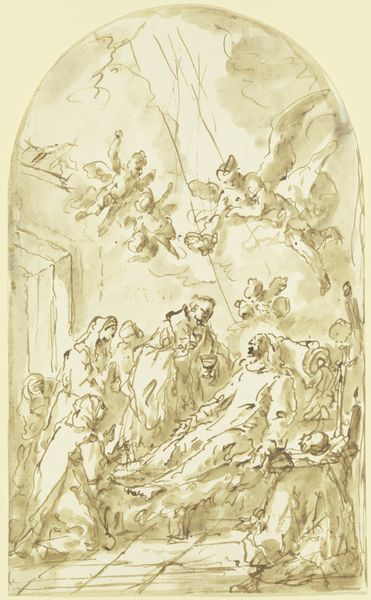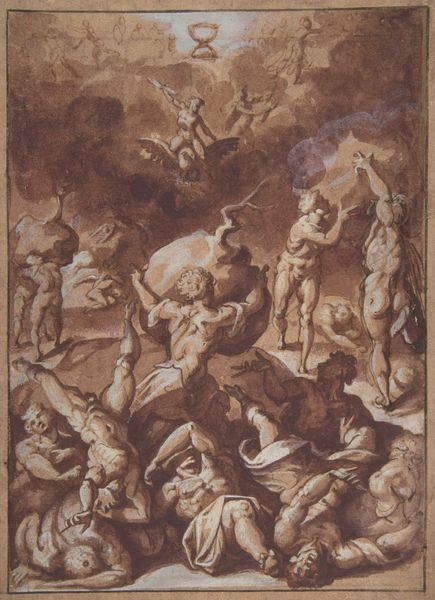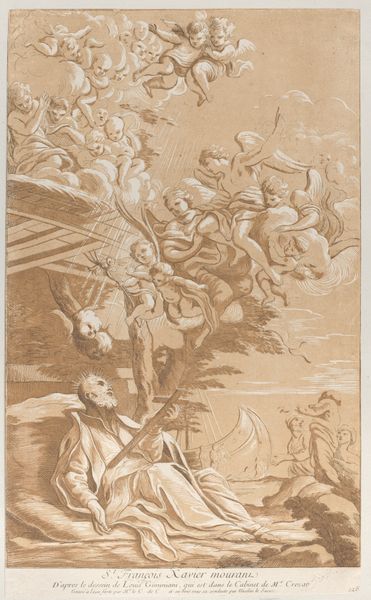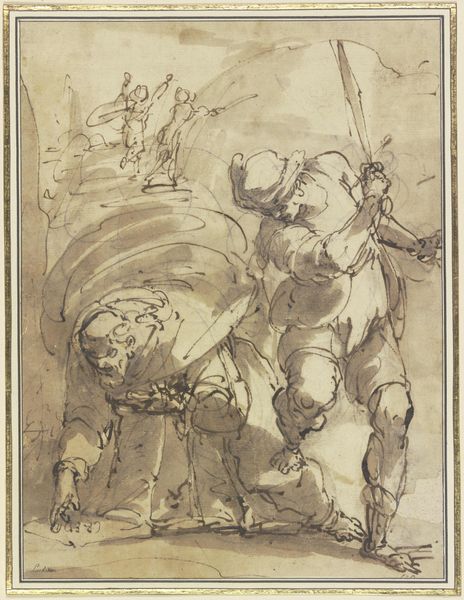
Earth Receiving the Code of Roman Law from the Emperors Hadrian and Justinian 1802 - 1803
0:00
0:00
drawing, print
#
drawing
#
neoclacissism
#
allegory
# print
#
classical-realism
#
perspective
#
figuration
#
history-painting
#
academic-art
Dimensions: 24 5/8 x 15 15/16 in. (62.5 x 40.5 cm)
Copyright: Public Domain
Editor: This is Charles Meynier's "Earth Receiving the Code of Roman Law from the Emperors Hadrian and Justinian," created around 1802 or 1803. It's a print or drawing with an allegorical theme, depicting several figures in a classical style. I'm struck by the grandeur and almost theatrical staging of the scene. What do you see in this piece, beyond the initial impression of its formality? Curator: It’s fascinating how Meynier uses Neoclassicism to legitimize power. This work, made during a period of significant social upheaval in France, presents a highly idealized vision of legal authority. Hadrian and Justinian, representing historical Roman Emperors, are bestowing law upon the Earth. Notice how Earth is depicted: she's receiving, submissive almost, positioned below the Emperors and various deities. It prompts us to consider how power dynamics are visually encoded and reinforced. Editor: So, the very composition serves to naturalize a certain social order? Curator: Precisely. It's not just about the historical figures themselves but the visual hierarchy. We have Justice and Minerva hovering above, further reinforcing the divine right of law. The piece invites questions about whose law is being imposed, and at what cost. Whose perspectives are omitted or silenced? Editor: The Neoclassical style seems to contribute to that sense of unyielding authority. Was this style particularly effective at conveying such messages? Curator: Absolutely. The clarity of line, the emphasis on reason and order—all these stylistic choices aligned perfectly with the aspirations of those in power who sought to legitimize their rule through association with the perceived stability and grandeur of the Roman Empire. And look, even the monochrome coloring creates a stark, imposing aesthetic. Editor: It is pretty stunning to see how aesthetic choices become intertwined with these grand narratives of power and legitimacy. Curator: Yes! It urges us to see art as actively participating in shaping, as well as reflecting the political and social landscapes it inhabits.
Comments
No comments
Be the first to comment and join the conversation on the ultimate creative platform.

